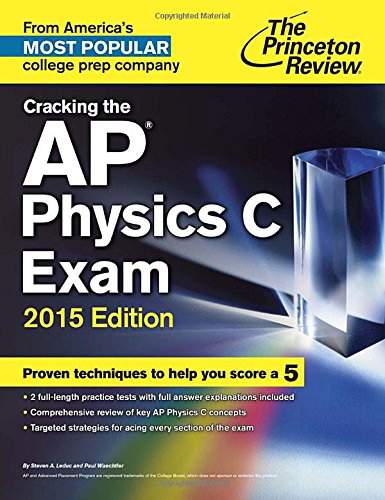Connecting...

This is a quick preview of the lesson. For full access, please Log In or Sign up.
For more information, please see full course syllabus of AP Physics C: Mechanics
For more information, please see full course syllabus of AP Physics C: Mechanics
AP Physics C: Mechanics Rotational Kinematics
Lecture Description
Before, we just had kinematics implying one or two dimensional linear movement. Now, we have rotational dynamics, which will be very similar, only now our movement is in a circular shape. Here, you’ll learn more about angular velocity and acceleration, and how they correlate to their linear counterparts. Your mind should be well accustomed to the concepts of these elements, so the best thing to do is to go through the examples in the video and really ensure that you get the math down, as rotational dynamics is going to start picking up pace in the coming videos.
Bookmark & Share
Embed
Share this knowledge with your friends!
Copy & Paste this embed code into your website’s HTML
Please ensure that your website editor is in text mode when you paste the code.(In Wordpress, the mode button is on the top right corner.)
×
Since this lesson is not free, only the preview will appear on your website.
- - Allow users to view the embedded video in full-size.
Next Lecture
Previous Lecture













































1 answer
Tue Jan 9, 2018 7:45 AM
Post by Zeeshan Shaikh on January 8, 2018
When you are deriving the centripetal acceleration formula. You state that r is equal to the sum of both the x and y component. How do you do this? You can't do pythagorean theorem. I just don't understand how you can say r equals the sum of the x and y component. Does it have to do with the fact you are using unit vectors?
1 answer
Thu Jan 5, 2017 2:14 PM
Post by James Glass on January 5, 2017
Back to "For the free response problem VII APC 2003 FR3, why is the initial Potential Energy UInitial = Ubucket + Uprojectile, it seems like the potential energies are in opposition to each other and I thought it would be UInitial = Ubucket - Uprojectile."
Understanding energy does not have direction helps make the Uinitial = Ubucket + Uprojectile seem true.... but logically it seems like the bucket would fall slower due to the mass x gravity of the projectile side... thus decreasing the kinetic energy available later. There must be a fundamental oversight by me because the AP guide has the same answer.
2 answers
Last reply by: James Glass
Thu Jan 5, 2017 1:18 PM
Post by James Glass on January 5, 2017
For the free response problem VII APC 2003 FR3, why is the initial Potential Energy UInitial = Ubucket + Uprojectile, it seems like the potential energies are in opposition to each other and I thought it would be UInitial = Ubucket - Uprojectile.
1 answer
Sun Dec 20, 2015 8:43 AM
Post by Jim Tang on December 19, 2015
These lectures click so much more with the AP frq at the end. Your physics 1 and 2 would be so good if you had them, maybe some B frq? Anyways, great lectures!
1 answer
Mon Mar 9, 2015 6:07 AM
Post by Philip Schultz on March 9, 2015
Where are the practice problems like advertised?
0 answers
Post by Professor Dan Fullerton on December 31, 2014
Since r is a constant, it gets pulled out of the integration, for the rest of the derivation, I am using the chain rule. (Derivative of rcos (wt) = -rsin(wt)*d/dt(wt) = -wrsin(wt)
1 answer
Last reply by: Thadeus McNamara
Wed Dec 31, 2014 3:26 PM
Post by Thadeus McNamara on December 31, 2014
at around 9:20, can you rexplain how you found the derivative of r? why arent you using chain rule